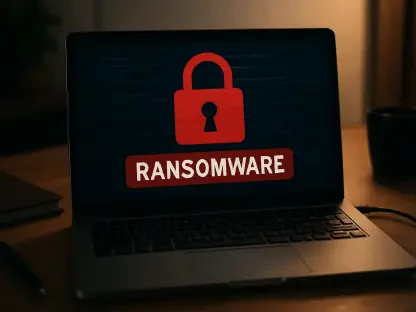The global shift toward remote work has fundamentally transformed how businesses operate, with employees increasingly relying on personal devices for work-related tasks. This trend, known as Bring Your Own Device (BYOD), has necessitated the implementation of robust security measures to protect corporate data and ensure compliance with data protection regulations. As the BYOD security market continues to grow, reaching an estimated USD 363.7 billion by 2033, understanding its evolution remains crucial for businesses aiming to safeguard their digital assets.
The Rise of Remote Work and BYOD Adoption
The COVID-19 pandemic significantly accelerated the adoption of remote work policies, compelling organizations to adapt quickly to a new operational paradigm. Employees began using their personal devices, such as smartphones, tablets, and laptops, to access corporate networks and perform their duties. This shift highlighted the urgent need for effective BYOD security solutions to protect sensitive data from potential breaches and cyberattacks. As remote work became the norm rather than the exception, businesses had to reevaluate their security frameworks to accommodate the increased risks associated with personal device usage.
The convenience and flexibility offered by BYOD policies have made them a permanent fixture in many organizations. However, this trend also introduced new security challenges, as personal devices often lack the stringent security measures found in corporate-issued hardware. Consequently, businesses have been investing in advanced security solutions to mitigate risks associated with BYOD. The hybrid work model, a blend of in-office and remote work, further complicated security needs, as employees may switch between secured corporate environments and less secure home networks. Ensuring comprehensive protection across these varied settings has become a top priority for IT departments.
Key Drivers of BYOD Security Market Growth
Several factors are driving the rapid growth of the BYOD security market. One of the primary drivers is the increasing volume of data being accessed and stored on mobile devices. As employees use their personal devices for work, the risk of data breaches and unauthorized access rises, necessitating robust security measures. Furthermore, the rise in sophistication of cyberattacks targeting mobile devices has underscored the need for advanced security solutions. Phishing attacks, malware, and ransomware specifically tailored for mobile platforms have become more prevalent, making it imperative for businesses to fortify their BYOD security protocols.
Regulatory compliance has emerged as another critical driver of the BYOD security market. Governments and regulatory bodies worldwide have implemented stringent data protection laws, such as the General Data Protection Regulation (GDPR) in Europe and the California Consumer Privacy Act (CCPA) in the United States. These regulations mandate businesses to adopt comprehensive security measures to protect personal and sensitive data, further fueling the demand for BYOD security solutions. Non-compliance can lead to severe penalties and reputational damage, making it essential for organizations to prioritize regulatory adherence. The Health Insurance Portability and Accountability Act (HIPAA) in the healthcare sector also imposes strict guidelines on data protection, compelling healthcare providers to implement robust BYOD security measures.
Dominant Segments in the BYOD Security Market
The BYOD security market is segmented based on device type, security solutions, and organization size. Among these, the laptop segment emerged as the dominant category, holding more than a 42.5% share of the market in 2023. Laptops’ extensive processing capabilities and comprehensive functionality for complex tasks make them a preferred choice for employees working remotely. Their versatility in handling various applications and their ability to support multitasking further contribute to their prominence in the BYOD security landscape. As a result, businesses have focused on securing these devices to prevent potential vulnerabilities.
The Mobile Data Security segment also captured a significant share of the market, driven by the exponential increase in data accessed and stored on mobile devices. Enterprises adopting mobile-first strategies and emphasizing regulatory compliance have contributed to the prominence of this segment. As mobile devices become integral to business operations, securing them against potential threats has become paramount. The proliferation of mobile applications for business processes, cloud-based services, and mobile payment systems has increased the need for specialized security solutions. Organizations now require comprehensive measures to safeguard mobile data, particularly as employees use a diverse array of devices with varying security postures.
Geographic Trends and Market Leadership
North America held a dominant market position in 2023, capturing more than 36.4% of the global BYOD security market share. The region’s advanced technological infrastructure, high penetration of mobile technology in workplaces, and a culture embracing remote work have contributed to its leadership. Additionally, stringent data protection regulations, such as the CCPA and HIPAA, have driven businesses to invest in robust BYOD security solutions. The regulatory environment in North America enforces rigorous standards for data protection, compelling organizations to adopt sophisticated security frameworks to avoid legal and financial repercussions.
Large enterprises represented a notable segment, comprising more than 58.3% of the market in 2023. These organizations’ vast IT infrastructures and complex data environments necessitated advanced BYOD security measures to safeguard against data breaches and unauthorized access. Compliance with stringent regulatory requirements further underscored the need for comprehensive security solutions in large enterprises. The scale at which these organizations operate requires extensive security protocols that can handle numerous endpoints and effectively manage potential threats. The resource-intensive nature of implementing and maintaining these security measures highlights the importance of robust BYOD security frameworks within large enterprises.
Technological Advancements and Innovations
Advancements in technology, particularly the integration of artificial intelligence (AI) and machine learning (ML), hold significant promise for innovative BYOD security solutions. AI and ML can enhance real-time threat detection and automatic incident responses, providing businesses with proactive security measures. These technologies can analyze vast amounts of data, identify patterns, and detect anomalies, enabling organizations to respond swiftly to potential threats. The ability to preemptively address security concerns before they escalate into major breaches offers a strategic advantage in the constantly evolving cybersecurity landscape.
Moreover, the development of zero-trust security models has gained traction in the BYOD security market. Zero-trust architecture assumes that no device, whether inside or outside the corporate network, can be trusted by default. This approach requires continuous verification of device and user identities, ensuring that only authorized individuals can access sensitive data and resources. Zero-trust models mandate rigorous authentication processes and granular access controls, minimizing the risk of unauthorized access. Companies adopting zero-trust frameworks benefit from a heightened security posture that effectively counters the vulnerabilities introduced by BYOD policies.
Challenges in BYOD Security Implementation
Despite the growth and advancements in the BYOD security market, several challenges persist. One of the primary challenges is balancing security measures with employees’ privacy concerns. Implementing stringent security protocols on personal devices can be perceived as intrusive, leading to potential resistance from employees. Businesses must find a delicate balance between ensuring robust security and respecting user privacy. Addressing privacy concerns involves transparent communication and involving employees in shaping the security policies that affect their personal devices.
Another challenge is managing the diversity of devices used by employees. Personal devices vary in terms of operating systems, software versions, and security capabilities, making it difficult to implement uniform security policies. IT departments must continuously update security protocols to match the fast-paced technological advancements of personal devices, adding complexity to the task of ensuring consistent and effective protections. The dynamic nature of technology requires adaptable and scalable security solutions that can seamlessly integrate new devices and operating systems without compromising overall security.
Key Players and Market Dynamics
The global shift toward remote work has dramatically changed how businesses function, with a growing number of employees using their personal devices for work tasks. This phenomenon, known as Bring Your Own Device (BYOD), has led companies to adopt comprehensive security measures to protect corporate data and comply with data protection laws. Protecting sensitive information on personal devices presents unique challenges, such as ensuring that security protocols can adapt to a variety of hardware and software configurations.
To effectively manage BYOD, businesses are investing in solutions like mobile device management (MDM) systems, secure access gateways, and employee training programs focused on cybersecurity. These tools help monitor device usage, enforce security policies, and ensure that personal devices meet corporate security standards. As a result, the BYOD security market is experiencing significant growth.
Estimates indicate that this market will reach approximately USD 363.7 billion by 2033, highlighting the increasing importance of securing personal devices in a professional context. Staying informed about the latest developments in BYOD security is crucial for businesses aiming to protect their digital assets. Adapting to these changes not only helps in maintaining data integrity but also in building trust with clients and stakeholders, ensuring that sensitive information remains secure in an ever-evolving technological landscape.









